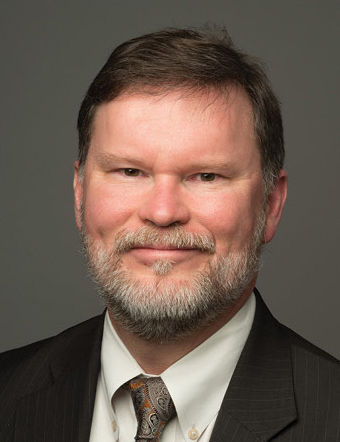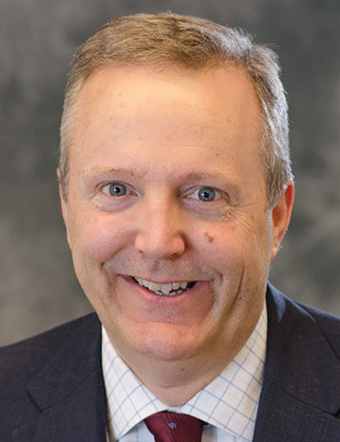
By Angelika Ruehr
In the world of actuarial science, professional growth continues long after the final exam. For many actuaries, joining the American Academy of Actuaries is a pivotal and advantageous step in their careers. We spoke with several longtime members about their experiences with the Academy. Their stories highlight how membership and their engagement with the Academy has benefited their careers, broadened their perspectives, and strengthened the profession.
The Many Reasons to Become a Member
For some actuaries, joining the Academy and levering the MAAA designation was encouraged by their employers as a mark of professionalism; for others, it was a deliberate step in recognizing the value of membership and its role in their careers.

“I was encouraged by my employer to join,” recalls Margaret Berger, a partner in Mercer’s Law & Policy Group, who has been an Academy member for 23 years, a past Academy Board member and current Vice Chair of the Retirement Practice Council. “Membership in the Academy indicated a high level of professionalism, professional responsibility, and adherence to the Code of [Professional] Conduct and USQS [U.S. Qualification Standards].”

For Grace Lattyak, partner at Aon and chairperson of the Academy’s Pension Committee, who has been an Academy member for 19 years, the decision was immediate. “Once I had my education and experience qualifications, I applied to become an Academy member right away,” she says. “In addition to getting to put ‘MAAA’ after my name, I was attracted to how the profession is self-regulated through the Code of Conduct. I was proud to be associated with all the other super smart and impressive actuaries I knew and didn’t know.”

Thomas Wildsmith, managing director of Legislative and Regulatory Policy at Blue Cross Blue Shield Association and a past Academy president with 37 years of membership, shares, “Like many actuarial students, I had been focused almost completely on my exams and my day job. I was fortunate enough to have management who recognized the need for actuarial professionalism.”

Bruce Cadenhead, partner and global chief actuary at Mercer with 29 years of membership, admits, “I didn’t give a lot of thought at the time to the opportunities to participate in committees and contribute to the profession that I later came to appreciate.”

For Frank Reagan, head of North American Retirement Actuarial Leadership, WTW, with 26 years of membership, speaking in a personal capacity, said rejoining the actuarial field prompted his Academy membership. “I accepted a retirement practice leader job and felt I should update my actuarial credentials as part of working as an actuary again, and to enhance my credibility with both my team and prospective clients,” he says.
The Role of Professional Standards
Members share how professional standards have not only guided their work and but also strengthened their practice.
Lattyak views standards as foundational. “When I first joined the Academy, I understood its role to primarily be to uphold the professionalism of its members,” she says. “The Code of Conduct and actuarial standards of practice have been a North Star for me as I progressed along my career. I can think of instances when I have been able to point to the ASOPs to support my approach to a calculation or a project when questioned by an external principal.”
Describing the practical application of these standards, Reagan says, “The Code of Professional Conduct and ASOPs provide a helpful compass and set of minimum standards to consider during engagements, particularly around communications and disclosure. It’s an important resource in my personal toolkit.”
He recalls a specific instance where standards proved crucial. “While many of the ASOPs set standards, I found ASOP No. 17 [Expert Testimony by Actuaries] particularly helpful as a resource for expert testimony. Large class-action lawsuits involved high stakes for clients, and this wasn’t work I handled every day.”
Wildsmith reflects on how these standards benefit the profession collectively. “Serving as Academy president was the greatest privilege of my professional career and helped me understand the importance of professionalism in a much deeper way,” he says. “It took decades to build the current professionalism infrastructure, with the Code, actuarial standards of practice, qualification standards, and disciplinary process that allows the [U.S.] actuarial profession to maintain the trust of the public.”
Committee Work and Volunteer Experiences Offer Enrichment
For many members, volunteering and committee involvement represent the most transformative aspect of Academy membership, providing them with unique learning experiences and career development opportunities.
Joining the Academy was the first step toward becoming a volunteer, Berger says. “Becoming a volunteer introduced me to a broad network of other volunteers from all over the country-many in the retirement sphere and others outside of it-who encouraged me to volunteer further and begin speaking at professional conferences. This gave me incredibly valuable experience speaking and writing, as well as exposure on a national level and the opportunity to directly interact with policymakers.”
Lattyak emphasizes how committee work has shaped her professional development. “Joining the Pension Committee and, even more so, becoming an active volunteer has provided me with significant growth opportunity,” she says. “I have learned so much about how retirement policy through conversations with congressional staff and meetings with government employees. I have gained leadership experience through leading a working group, then becoming vice chair, and ultimately as chair of the Pension Committee. This experience has taught me about management and prioritization in a different way than I experience at work, but that, I believe, is helping to accelerate my growth.”
Cadenhead found his professional home in committee work. “I feel like I found my volunteer ‘home’ when I joined the Pension Committee, which provides a great opportunity to engage in public policy issues, as well as guidance to the profession through developing practice notes and offering feedback on developing actuarial standards of practice,” he says.
He shares the personal significance of leadership roles. “To be selected to chair the committee is a great honor and an indication that my work with the committee and my role in the profession, in general, is appreciated by peers.”
Wildsmith describes unique experiences made possible through volunteer work. “One of the most unique and enjoyable volunteer opportunities has been the annual Capitol Hill visits conducted by the Academy’s Health Practice Council,” he says. “In recent years, this has been extended to other practices as well. It gives Academy volunteers the opportunity to represent the Academy in meetings with congressional staff. This provides an inside view of the policy development process that most people never see.”

Just Do It
Considering membership or a deeper engagement with the Academy? Here’s what some longtime members have to say. Spoiler alert: It’s a resounding yes!
Expand your personal and professional networks.
Margaret Berger, a partner in Mercer’s Law & Policy Group, who has been an Academy member for 23 years, says, “Go for it! It’s a lot of work but it’s fulfilling in a way I never would have imagined when I started. And there is no better way to expand your personal and professional network.”
Engage actively to reap the full benefits-for you and your employer.
Grace Lattyak, partner at Aon and chairperson of the Academy’s Pension Committee, who has been an Academy member for 19 years, emphasizes the importance of active participation. “We’ve all heard the more you put in the more you’ll get out, so I’ll just be the next one to repeat it because it is so true,” she says. “I’d encourage everyone to volunteer in some way-it can be on just one project or in a bigger way. I find I engaged so much more with all of the Academy resources once I became an active volunteer.”
Give back to the profession.
Thomas Wildsmith, managing director of Legislative and Regulatory Policy at Blue Cross Blue Shield Association and a past Academy president with 37 years of membership, says, “Just do it. Everyone can contribute; you don’t have to know everything. If you’re less experienced right now, you can help draft and edit, and you’ll gain insights and experience over time to contribute more. Volunteering with the Academy is one of the most satisfying ways to give back to the profession.”
Seize the growth opportunity.
Bruce Cadenhead, partner and global chief actuary at Mercer with 29 years of membership, emphasizes the professional development aspect. “Taking on a volunteer role and having the chance to work collaboratively with other actuaries in support of the profession and in support of good public policy offers a great learning opportunity.”
Contribute to the profession’s advancement.
Frank Reagan, head of North American Retirement Actuarial Leadership, WTW, with 26 years of membership, shares how his personal perspective on Academy membership evolved over time. “I joined the Academy long ago simply to add MAAA after my name,” he says. “In recent years, I have really gotten a lot out of my interactions with Academy leadership and perspectives about the Academy from my actuarial colleagues working outside of the pension space. As a result, I have come to appreciate and understand the important role it plays in supporting the profession.”
Unexpected Benefits
Committee work often exposes actuaries to issues and areas outside their daily practice, broadening their professional perspective in unexpected ways.
Lattyak reflects on how Academy work has shifted her focus. “In my day-to-day job of preparing disclosure results and required filings and notices, sometimes it is easy to forget the big picture of what we are doing as actuaries-helping entities provide financial security to people in an efficient manner,” she says. “Working with the Academy and participating in events has broadened my perspective in many ways, including reminding me how important the work we do as a profession is for people. We want our work to be mathematically robust so we can enable our support of financial security systems.”
Berger values how her committee work has “broadened my perspective on actuarial matters by exposing me to issues I wouldn’t otherwise see as a single-employer private-plan actuary. It’s very easy at work to build a silo around yourself and focus on only what’s directly in front of you but serving on the Pension Committee has given me the opportunity to learn so much more. I’ve learned a lot about all kinds of pension plans I’ve never worked with, and I’ve even learned about actuarial issues in the other practice areas.”
Cadenhead appreciates similar exposure. “It has been enormously valuable to hear the perspectives of other actuaries working in other areas that relate to retirement policy,” he says. “Social Security, for example, is vitally important to all Americans, so it’s been great to hear from actuaries who work regularly in this area and get a better understanding of the challenges facing the system as well as the arguments for and against the various proposals for addressing those challenges.”
Wildsmith describes how Academy involvement supports workplace experience. “My day jobs have taught me about the health benefits industry-but only from the perspective of those particular organizations,” he says. “Through the Academy, I’ve been able to benefit from the perspectives of not just actuaries from other commercial organizations, but from regulatory actuaries as well.”
Access to Practical Tools and Resources
Beyond networking and committee work, the Academy provides practical resources that help members tackle specific workplace challenges.
Lattyak shares an example where Academy resources proved invaluable. “I needed to learn about the valuation of variable annuity pension plans quickly, and luckily, the Pension Committee had published a practice note, which went into considerable depth on the topic,” she recalls. “I was able to study the practice note and talk to one of the authors who answered some of my questions. This allowed me, along with other experts in my firm, to have an educated discussion with the principal about the design and valuation considerations for such plans. The Academy resources go beyond just the rules, to helping actuaries understand the nuances and practical implications of rules.”
Reagan has found several Academy practice notes particularly valuable. The March 2021 Actuarial Standard of Practice (ASOP) No. 6 Practice Note: Development of Age-Specific Retiree Health Cost Assumptions, Including Applications to Pooled and Non-Pooled Health Plans helped get everyone on the same page quickly about using age-independent cost curves.

He also notes how practice notes can introduce actuaries to unfamiliar plan types. “The practice note on variable pension plans was helpful to educate pension actuaries about a type of plan they likely hadn’t been exposed to in their day-to-day work, but which uniquely allocates risks in a way which may overcome common objections to plan sponsorship.”
Cadenhead describes his experience using practice notes in his workplace. “I think the work we did in developing the practice note, Valuing Benefits Payable as a Lump Sum. Although this is a pretty technical topic, it’s one that has broad application throughout the pension area-particularly as an increasing number of defined benefit pension plans offer a lump sum payment form. There is a surprisingly broad spectrum of opinions on how lump sum benefits should be reflected when measuring liabilities.”
For professional development, Berger recommends the Academy’s webinars, which she says are timely, useful, and a cost-effective way to gain continuing education credit.
Lattyak particularly values the Academy’s ability to bring diverse perspectives. “The Academy has strong relationships with public policy actuaries and non-actuaries in fields related to our work,” she says. “I always find the meetings or webinars where we have the opportunity to hear directly from actuaries that work for government agencies, like the Government Accountability Office, or thought leaders in the industry, such as Mark Iwry as a part of our ERISA at 50 retrospective webinar, to be incredibly enlightening.”
Unexpected professional skills development can also occur through Academy involvement. Cadenhead shares a memorable example. “Before I took on the role of chair of the Pension Committee, I had a full day of Academy-sponsored media training,” he says. “This training has been enormously helpful not only in discussions with reporters, but also in many other situations requiring a quick but well-thought-out response. I had the chance to provide expert testimony in an arbitration hearing, and I realized as I was in the middle of responding to one of the questions that I was drawing on the lessons that I had learned during that media training. It really helped me stay calm and focused during what might otherwise have been a stressful situation.”
The Academy’s Impact: A 60-Year Member’s Perspective
Jim MacGinnitie has a long and distinguished history with the Academy. A charter member, he served as the Academy president from 1988 to 1989, and later as senior casualty fellow from September 2015 to September 2017.
His connection to the Academy began at a pivotal time-both for him professionally and for the actuarial field.
Early Days and the Profession’s Growth
When the Academy formed in 1965, MacGinnitie was working for an insurance company in Bogota, Colombia. Fellows of the Academy’s founding organizations were eligible if they were practicing in the United States, and he qualified as he would be returning soon to practice in the U.S.
“In all honesty, at the time it was probably just another set of initials to make my signature that much more impressive,” MacGinnitie says. “Professionalism was still a hazy concept, and the real qualifications issue in 1965 was in the pensions area.”
As the profession sought to define itself, foundational principles of conduct began to emerge. The original Code of Conduct was based on a memorandum from England, and Jarvis Farley and Mary Hardiman Adams were instrumental in adapting it for the U.S. actuarial profession, MacGinnitie says. Farley, a fellow charter member and one of the Academy’s most dedicated volunteers, served on Academy committees from 1972 until his death in 1991. The Academy established the Jarvis Farley Service Award in 1991 to recognize volunteers whose efforts made significant contributions to the advancement of the actuarial profession. Adams was its first recipient.
“Things continued to grow, but back then it was mostly an unwritten honor code,” he says. “Most actuaries had come up through large employers, which encouraged younger actuaries to follow standards of conduct that were implicit, [but] there wasn’t a lot written.”
The profession itself looked very different in those early days. In 1965, it was much smaller with membership concentrated in organizations such as the Casualty Actuarial Society (CAS) and the Society of Actuaries, both of which predate the Academy’s founding. At the time, actuaries primarily focused on insurance companies and pension plan sponsors, according to MacGinnitie.
“To me, joining the Academy was a no-brainer, and probably everyone felt the same back then did too,” he says. “In my area of casualty, rating bureaus were dominant; a large fraction of the casualty actuaries either worked at the bureaus or served on their committees. Reserve opinions were yet to come,” he says.
One key part of actuarial infrastructure at the time was the rating bureau system. Rating bureaus were associations of several-sometimes nearly all-insurance companies that pooled their experience data to develop rates and policy forms. Some still exist today, such as Verisk Analytics and the National Council on Compensation Insurance.
Shaping Regulatory and Legislative Requirements
Over time, the Academy expanded its structure and influence. Today, the Academy is well organized to interface with legislative, regulatory, and other relevant bodies, MacGinnitie says. Over the years, it has evolved from a capstone association of its founding associations to a free-standing organization with dedicated staff.
Its role in federal outreach has grown significantly. In addition to the annual spring Hill visits with federal legislators, the Academy engages in ongoing outreach with federal regulatory and oversight agencies. These include the U.S. Government Accountability Office, the Securities and Exchange Commission, the Labor Department’s Employee Benefits Security Administration, as well as the National Association of Insurance Commissioners [NAIC] and the Pension Benefit Guaranty Corporation on retirement-related issues, MacGinnitie says. (Read also, “Charting the Future of Insurance” on page 12 to learn more about the NAIC.)
“When I started [with the Academy], an actuarial signature wasn’t required on anything, even the big reports,” he says. “All the big life insurance companies had actuaries doing their thing, but the idea of signatures, qualification standards, and [statements of] actuarial opinion to back it up-that’s all evolved since then.”
The Academy has played a key role in shaping regulatory/legislative requirements to reflect sound actuarial principles, particularly in the development of standards for actuarial certification, opinions, and reports, he says. It has also advanced the profession through the development of professionalism, practice standards, and disciplinary mechanisms. Events such as the Enrolled Actuaries Meeting (formerly run by the Academy in partnership with the Conference of Consulting Actuaries) and the Casualty Loss Reserve Seminar (co-sponsored with CAS) have provided valuable opportunities for engagement with regulators, key officials, and other stakeholders, MacGinnitie says.
Certain milestones stand out as especially meaningful in the Academy’s history. MacGinnitie points to the launch of Contingencies in 1989, the formation of the Actuarial Standards Board (ASB) in 1988, and the Actuarial Board for Counseling and Discipline (ABCD) in 1992. MacGinnitie’s successor, Joe Brownlee, formed the task force that led to Contingencies being launched.
“Contingencies has helped extend knowledge and understanding-and created appreciation and respect for the actuarial profession,” he says, adding that both the ASB and ABCD also have been invaluable to the profession.
Professionalism and self-regulation remain cornerstones of the Academy’s value, he believes. “We see the Academy continuing to contribute to a strong professionalism ethos,” MacGinnitie says. “For my career, it’s been great to have our self-regulation. I don’t think we’d be allowed to continue as a self-regulated profession without the ASB and ABCD.”
Looking back, MacGinnitie reflects on the value of giving back to the profession. “As the breadth of the profession has spread and with members everywhere, the Code of Conduct and the standards of practice emphasize the value of and keep professionalism high-with a little discipline to back it up. With the large numbers of employers with which actuaries are affiliated, you just couldn’t manage that without the ABCD.”
Volunteering and working as a senior casualty fellow have been highly rewarding, MacGinnitie says. “Actuarial work is a public profession dealing with long-term promises to the public that depends on us. I’ve gotten a lot personally through being able to interface with a wide variety of actuaries in different settings over the years. But the emphasis going forward is that I’ve benefited from the people who came before me. ‘Paying it forward’ makes it possible for the people who come behind us to enjoy a wonderful opportunity to work in a select, but a very valuable and a very challenging profession.”
Looking Ahead
MacGinnitie sees a future where the Academy continues to broaden its relevance. He notes that the Academy “is not a scientific organization but it certainly has been helpful in extending the range of actuarial work and the acceptance of the need for actuarial input in certain situations.”
Academy members are experts in cutting-edge fields such as climate science and artificial intelligence, and can offer valuable input. “We have people who are working very hard in those areas, and they get support from the Academy,” he says.
Michael G. Malloy is the Academy’s Managing Editor for Member Content.
Public Policy Engagement
Academy membership offers unique opportunities to influence public policy-experiences that are not readily available through typical workplace roles.
Cadenhead recently represented the Academy before the Pension Benefit Guarantee Corporation’s (PBGC) advisory committee. “The high cost of insuring private sector pensions with the PBGC has been an important factor discouraging employers from offering defined benefit pension plans,” he says. “Meanwhile, the PBGC’s single employer insurance fund has substantial surplus assets. I got to lead a discussion on this topic with the advisory committee and PBCG representatives who were very engaged on this topic. I really enjoyed the experience and am hopeful that this work will lead to positive changes.”
Wildsmith, who works in health policy, notes how his involvement with the Academy supports his daily work. “Because I work in health policy, the public policy work the Academy often directly relates to the work I’m doing in my day job,” he says.

He also describes the broader impact of the Academy’s public policy work. “By providing unbiased, trusted actuarial advice to regulators and legislators, the Academy promotes a legislative and regulatory environment that reflects sound actuarial principles,” Wildsmith says. “This is a prerequisite for viable markets for insurance products and benefit programs. More directly, the information provided by the Academy’s public policy publications and webinars keeps actuaries-and their employers-up to date with current regulatory and legislative developments.”
The Employer Partnership
Academy involvement requires time and resources, making employer support essential. However, the relationship between Academy involvement and employer benefit works is mutually reinforcing.
“I have to thank Mercer for being so supportive over the years of my volunteering,” Berger says. “I like to think having me as a volunteer has been as useful to Mercer as my employer as it has been for me professionally, but the fact is that without Mercer’s support, I wouldn’t have been able to volunteer as extensively as I have.”
Lattyak explains how her Academy involvement benefits her employer. “One of many benefits of my Academy membership to my employer is being informed about new developments in actuarial practice or retirement policy,” she says. “Practice notes and issue briefs provided by groups of actuaries provide insight into collective best practices. Academy events and engagement with policymakers provide insight into what is coming in the industry.”
Wildsmith highlights the benefits employers gain when their employees engage with the Academy. “Employers benefit from the professionalism of their actuaries, the willingness of regulators to accept actuarial certifications, the trust the financial community places in actuarial valuations, and the quality of work performed by Academy members,” he says.
Cadenhead describes how his Academy and workplace roles align with one another. “As Mercer’s chief actuary, I am responsible for providing guidance to our consultants and understanding how changes in rules or standards of practice affect our work,” he says. “These roles have been very complementary, and I have been able to use my experience with Mercer to support my Academy role and vice versa.”
He also notes how knowledge flows in both directions. “Although I bring a lot of what I have learned at Mercer to my committee work, I also get to hear what actuaries at other firms are thinking and can bring that experience back to Mercer. I heard a lot of positive feedback from other actuaries at Mercer on the webinar that we (the Academy) gave on this topic. I was able to incorporate what I learned throughout the process in our internal guidance at Mercer.”
Reagan observes that a balanced approach is necessary. “For any employer of actuaries, I think the main value the Academy provides is through the Code of Conduct and standards of practice. However, balance is always needed here because new or updated ASOPs can create extra work and costs which principals may be unwilling to pay.”
Evolution and Adaptation
As the business environment grows more complex, members share their observations about how the Academy has evolved and continues to prepare the profession for future challenges.
Lattyak emphasizes the enduring importance of professional standards in a changing world. “I think being a profession subject to high standards of practice will be even more important as we move forward,” she says. “Our work might look a bit different as technology and the business world evolves, but I believe the skills of attention to detail, critical thinking, and risk assessment that actuaries possess will be needed even more. To stay relevant, the Academy will need to evolve as well-how standards of practice are set and how we engage with public policy.”

Reagan considers the impact of emerging technologies on the profession. “Technological changes such as artificial intelligence (AI) and commercial interests create circumstances where purveyors of insights and advice will be increasingly available,” he says. “As a result, I expect many principals will seek out and value the professionalism and objectivity a credentialled actuary can bring to bear on their issues. I would look to the Academy to set thoughtful guidelines on responsible use of emerging technologies and data sets consistent with its mission and with keeping the profession largely self-regulated.”
Cadenhead sees a similar challenge. “I think the biggest challenge is keeping up with the pace of change,” he says. “The Academy is vital to ensuring that professional standards can evolve quickly in the face of AI and other technological changes. The Academy has a well-deserved reputation among policymakers for providing an unbiased perspective, and it’s important to our mission to maintain that reputation.”
Berger describes the Academy as “a proactive, forward-thinking organization. I hope it will continue to provide actuaries with valuable continuing education experiences to help them navigate the rapidly changing business environment, adapt to change, and rise to the challenges they face.”
For Wildsmith, the Academy’s fundamental role remains constant despite evolving challenges. “It provides the professionalism infrastructure necessary to assure the U.S. public that the actuarial profession is worthy of its trust,” he says. “It also serves as the voice of the U.S. actuarial profession as an impartial advisor to legislators and regulators on public policy issues. The professionalism and policy issues that are of current concern will change over time, but the need for the Academy to serve as the voice and conscience of the profession won’t.”
Pathways for Growth
From employer-encouraged membership to decades of deep engagement, members’ experiences highlight the many ways Academy involvement shapes actuarial careers. Whether through committee work, public policy engagement, or professional development opportunities, the Academy offers its members pathways for growth that complement and enhance workplace experiences.
Angelika Ruehr is the Academy’s Director of Membership Growth and Engagement.